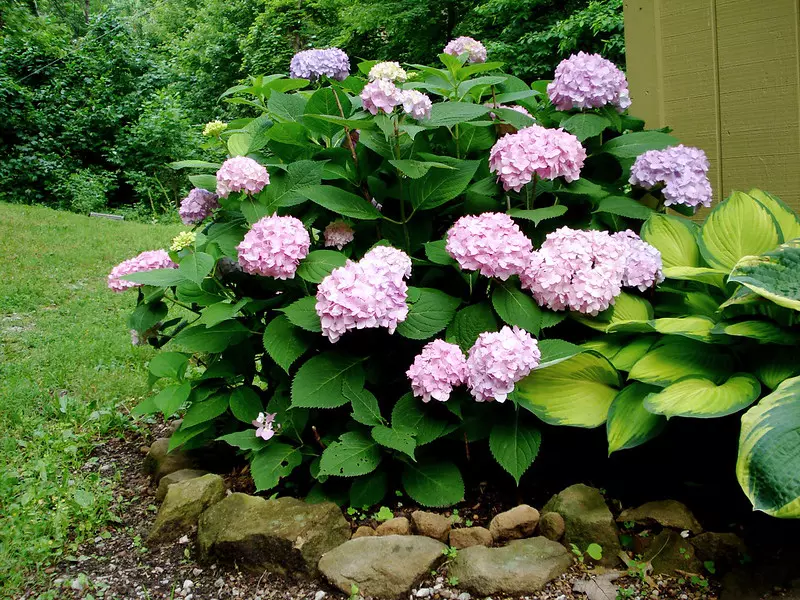
Hydrangea macrophylla 'Endless Summer': A Comprehensive Guide
Comprehensive guide on Hydrangea macrophylla 'Endless Summer'. Learn expert tips on planting, care, pruning, and maintaining vibrant blooms.
Read More💡 Pro Tip: Regularly test your soil pH to maintain consistent bloom colour!
Hydrangea macrophylla, commonly referred to as garden hydrangea, is a versatile flowering shrub cherished for its large, showy blooms and lush green foliage. Native to Japan, this ornamental plant has captivated gardeners worldwide, thanks to its ability to adapt to different climates and soil conditions.
Known for its distinctive mophead and lacecap flower types, Hydrangea macrophylla offers a range of colors that vary with soil pH, providing a unique gardening experience. This deciduous shrub typically grows up to 2 meters tall and wide, making it a perfect choice for hedges, borders, or container gardens.
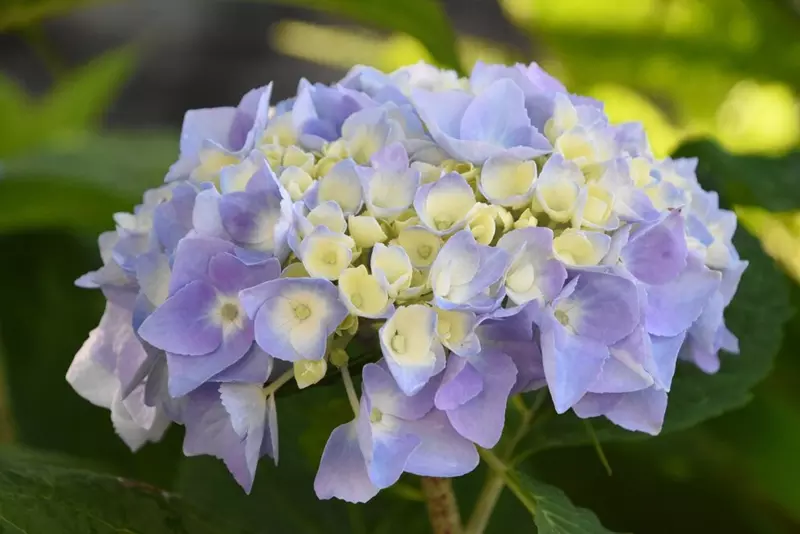
The history of Hydrangea macrophylla dates back centuries, with its origins deeply rooted in Japanese culture. Known locally as "Ajisai," this plant is a symbol of gratitude, apology, and heartfelt emotion. Hydrangeas are often planted in temple gardens and along pathways in Japan, where their lush blooms signify renewal and tranquility during the rainy season.
Hydrangea macrophylla was introduced to Europe in the late 18th century by plant explorers fascinated by its color-changing blooms. It quickly gained popularity among aristocrats and botanists alike, becoming a staple in Victorian gardens. During this era, hydrangeas were seen as symbols of vanity and pride due to their bold, dramatic appearance.
Today, Hydrangea macrophylla is celebrated worldwide for its versatility and cultural significance, making it a beloved choice for home gardens and public landscapes.

Planting Hydrangea macrophylla correctly is key to ensuring its health and long-lasting beauty.
One of the most critical steps in planting Hydrangea macrophylla is ensuring the root ball is thoroughly hydrated before planting. This step reduces transplant shock and increases the likelihood of the plant thriving in its new location.
This simple yet crucial step ensures the soil around the roots is fully saturated, preventing the plant from drying out after planting. Skipping this step may result in poor root establishment, especially in dry conditions.
Hydrangea macrophylla thrives in partial shade, where it can enjoy morning sunlight and afternoon protection from intense heat. Avoid locations with full sun exposure, as this can scorch the leaves, or deep shade, which can reduce flowering.
The best times to plant Hydrangea macrophylla are early spring and autumn when the weather is mild. However, with proper preparation, including soaking the pot, you can plant it at any time of the year. During summer, ensure the plant receives consistent watering to prevent stress.
After planting, it’s essential to monitor the plant's water needs, especially during the first few weeks. Keep the soil moist but not waterlogged, and add a slow-release fertiliser in spring to encourage growth and blooming. Regular pruning can also help maintain its shape and promote healthy flowering.
Planting Hydrangea macrophylla correctly, with a focus on soaking the root ball before planting, ensures a healthy start for this stunning shrub. By following these steps and providing the right care, you’ll enjoy vibrant blooms and lush foliage for years to come. Whether you’re a seasoned gardener or a beginner, these simple techniques will set you up for success.
Pruning is an essential part of maintaining healthy and vibrant Hydrangea macrophylla, commonly known as bigleaf hydrangea. However, incorrect pruning practices can severely impact its ability to bloom. This guide explains the best pruning techniques and the critical timing to ensure your hydrangea thrives year after year.
Contrary to popular belief, Hydrangea macrophylla should only be pruned in spring, specifically after the risk of frost has passed. The earliest recommended time is March, as late frosts can damage exposed buds. Avoid pruning in autumn, as this can expose the plant to frost damage, potentially ruining the top buds that will produce flowers the following year.
Since this hydrangea blooms on old wood, preserving the buds formed during the previous growing season is crucial for vibrant blooms.
Proper pruning not only encourages healthy growth but also ensures a stunning display of blooms. Follow these steps for best results:
Begin by cutting off the faded flower heads. Use sharp, clean pruning shears to make a clean cut just above the first pair of strong buds. This ensures you preserve the buds that will bloom in the coming season.
Drastic pruning of Hydrangea macrophylla should be avoided, as this can remove the essential buds formed the previous year. Without these buds, the plant will not produce flowers.
That said, even if the plant is not pruned at all - whether due to time constraints, inexperience, or personal choice - it often still performs surprisingly well. While you may see slightly fewer or smaller blooms, the plant’s overall health and growth are rarely compromised.
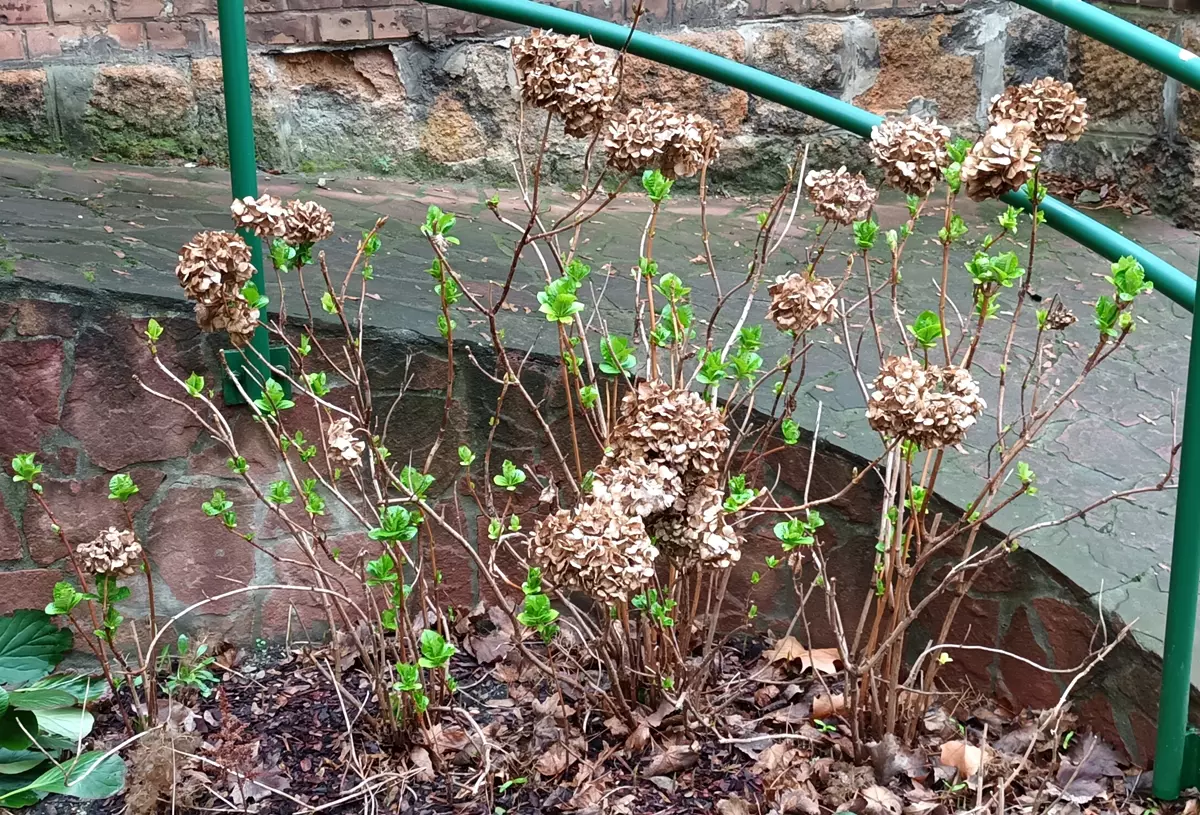
Cut back any branches that have suffered frost damage or are visibly dead. These can be pruned back to their base (also called "cutting to the crown"). This process also helps to thin the plant, improving air circulation.
If you wish to propagate your hydrangea, you can take cuttings from the plant. Keep in mind that the branches used for cuttings are unlikely to produce flowers that year.
Hydrangea macrophylla is unique in that it blooms on old wood. This means that the buds for next year’s flowers form during the previous growing season. Mis-timed or excessive pruning can result in a flowerless plant. By following these guidelines, you can protect your hydrangea’s bloom potential and keep it looking its best.
Pruning your Hydrangea macrophylla correctly is essential for healthy growth and abundant blooms. Always prune in spring, after the last frost, and avoid heavy pruning. Focus on removing spent flowers, frost-damaged branches, and unwanted stems to maintain the plant’s health and aesthetics. With careful pruning, you can enjoy a garden full of vibrant hydrangea blooms year after year.
What makes Hydrangea macrophylla plant particularly fascinating is its ability to change flower colour based on soil pH. Understanding this phenomenon and knowing how to control soil conditions can help gardeners create stunning floral displays.
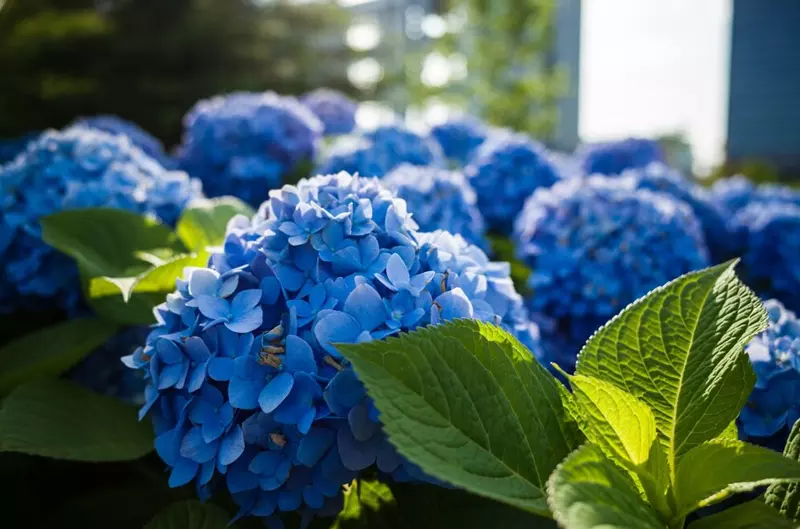
The flower colour of Hydrangea macrophylla is directly influenced by the availability of aluminium ions in the soil, which is determined by the soil's pH level. Soil pH ranges from acidic (<7) to neutral (7) and alkaline (>7), and each range affects the hydrangea differently:
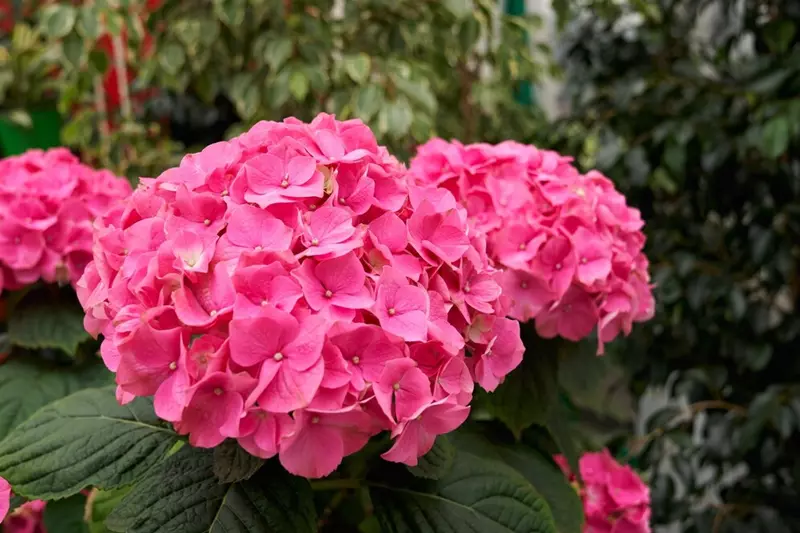
Gardeners can manipulate soil pH to control the colour of hydrangea blooms. Here are practical steps to achieve the desired effects:
While adjusting soil pH is key to controlling flower colour, overall plant health also plays a crucial role in the vibrancy of blooms. Here are some tips to keep your hydrangeas thriving:
The remarkable ability of Hydrangea macrophylla to change flower colour based on soil pH provides endless possibilities for gardeners. By understanding and managing soil conditions, you can create breathtaking displays of blue, pink, or even purple hydrangeas. Regular soil testing and careful adjustments will ensure your hydrangeas continue to thrive and captivate year after year.
Propagating Hydrangea macrophylla allows you to grow new hydrangeas for your garden or to share with others. In this guide, we explore three effective propagation methods: cuttings, layering, and division.
There are several ways to propagate Hydrangea macrophylla, each with its own benefits. Choose the method that suits your needs and gardening experience.
Taking cuttings is one of the most popular and reliable methods of propagating hydrangeas. Follow these steps to propagate your plant using cuttings:
Layering is another effective method, especially for gardeners who want to propagate hydrangeas without cutting. Here’s how:
Division is a less common but effective method for established hydrangeas. It’s best performed in early spring or autumn. Here’s the process:
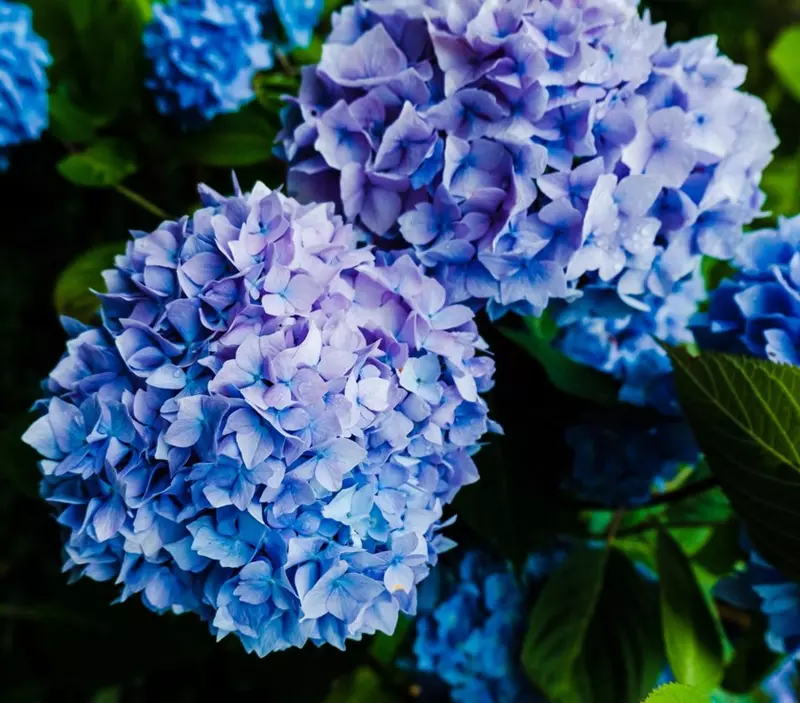
Propagating Hydrangea macrophylla is a rewarding way to expand your garden or share these stunning plants with friends. Whether you choose cuttings, layering, or division, each method can result in healthy new plants with proper care. Follow these techniques and enjoy the satisfaction of watching your propagated hydrangeas thrive and bloom.
Hydrangea macrophylla, also known as bigleaf hydrangea, is a frost-sensitive plant that requires careful preparation to survive the winter months. Without proper protection, cold weather can damage the plant's stems and buds, significantly affecting the next season’s blooms. This guide provides effective strategies for safeguarding your hydrangeas from winter frost.
A thick layer of mulch is one of the most effective ways to protect Hydrangea macrophylla from harsh winter conditions. Mulch acts as an insulating barrier, stabilising soil temperatures and preventing frost from penetrating the root zone. Follow these tips for effective mulching:
Pruning at the wrong time can leave your hydrangea vulnerable to frost damage. It is crucial to wait until spring, after the risk of frost has passed, before trimming any part of the plant. Here’s why delaying pruning is important:
In spring, prune carefully to remove only dead or frost-damaged branches, ensuring the healthy buds are preserved for the coming season’s flowers.
In addition to mulching and delaying pruning, consider these techniques to ensure your hydrangea survives the winter unscathed:
Protecting Hydrangea macrophylla for winter requires attention to detail. Avoid these common mistakes to ensure your plant remains healthy:
Protecting Hydrangea macrophylla during winter is essential for preserving its health and ensuring abundant blooms in the next growing season. Focus on applying a thick mulch layer, avoid pruning until spring, and use additional protective measures as needed. With these simple steps, your hydrangea will emerge from winter strong and ready to flourish.
Hydrangea macrophylla is a stunning addition to any garden, but it can fall victim to various diseases that impact its health and beauty. Proper care, preventive measures, and timely treatment can help ensure that your hydrangea thrives. This guide discusses common diseases, their symptoms, and effective prevention and treatment methods.
Hydrangeas are susceptible to several diseases, ranging from fungal infections to bacterial and environmental issues. Understanding the symptoms is key to addressing these problems effectively.
Symptoms: A white, powdery coating on leaves and stems, often leading to leaf distortion and reduced vigour.
Cause: High humidity and poor air circulation are primary contributors.
Symptoms: Dark brown or black spots on leaves, sometimes surrounded by yellow halos. Severe infections can cause defoliation.
Cause: Fungal pathogens, particularly Cercospora and Anthracnose.
Symptoms: Yellowing leaves, stunted growth, and wilting. Roots appear brown and mushy.
Cause: Waterlogged soil promotes fungal growth, especially Phytophthora.
Symptoms: Orange or reddish-brown pustules on the undersides of leaves.
Cause: Fungal spores spread by wind or water.
Symptoms: Rapid wilting of leaves and stems, often leading to plant death.
Cause: Bacteria entering through wounds in the plant.
Prevention is the best strategy for keeping your hydrangea disease-free. Follow these tips to minimise risks:
If your hydrangea shows signs of disease, quick action can prevent further damage. Here are effective treatment methods:
Regular monitoring and proactive care are essential for maintaining the health of your Hydrangea macrophylla. Follow these steps:
Protecting your Hydrangea macrophylla from diseases requires a combination of preventive measures, early detection, and effective treatments. By implementing these strategies, you can ensure your hydrangea remains healthy and produces stunning blooms year after year. Stay vigilant and proactive to enjoy the full beauty of this garden favourite.
Hydrangea macrophylla, or bigleaf hydrangea, is not immune to pests that can damage its foliage, flowers, and overall health. Eco-friendly pest management ensures that your hydrangeas remain vibrant while protecting the environment. This guide explores sustainable methods for identifying, preventing, and managing pests naturally.
Identifying the pests that commonly target hydrangeas is the first step towards effective control. Below are the most frequent culprits:
Prevention is a cornerstone of eco-friendly pest management. By creating an unfavourable environment for pests, you can significantly reduce infestations.
Ladybirds, lacewings, and parasitic wasps are natural predators of aphids, mites, and other pests. Planting companion flowers like marigolds and dill attracts these helpful insects to your garden.
Strong, healthy plants are more resistant to pests. Ensure your hydrangea receives adequate water, nutrients, and proper spacing for good air circulation.
Organic mulch not only helps retain moisture but also discourages slugs and snails by creating a rough barrier they dislike crossing.
Frequently check your hydrangeas for signs of pests. Early detection allows for quick action before infestations become severe.
If pests become a problem, there are several sustainable solutions to manage them without harming the environment.
For visible pests like slugs, snails, or beetles, handpicking is an effective and chemical-free solution. Dispose of them far from your garden.
Create your own natural sprays to deter pests:
Use physical barriers like copper tape around the base of the plant to deter slugs and snails. Floating row covers can also protect plants from flying insects.
For slugs and snails, place shallow containers of beer near the plants. The pests are attracted to the beer and become trapped.
In cases of severe infestations, organic pesticides may be necessary. Look for environmentally friendly options like insecticidal soaps or pyrethrin-based products. Always follow the manufacturer’s instructions and apply during the early morning or evening to avoid harming beneficial insects.
For sustainable pest control, incorporate these long-term strategies into your garden care routine:
Eco-friendly pest management for Hydrangea macrophylla ensures that your garden remains healthy and sustainable. By focusing on prevention, encouraging beneficial insects, and using natural treatments, you can protect your hydrangeas without harming the environment. With a proactive and mindful approach, your hydrangeas will thrive, offering a stunning display of blooms year after year.
Hydrangea macrophylla, or bigleaf hydrangea, is a versatile shrub that creates a dramatic impact in any garden with its vibrant blooms and lush foliage. To maximise its beauty and ensure healthy growth, companion planting is a highly effective strategy. This guide explores the best plants to pair with hydrangeas, their benefits, and how to design a harmonious garden.
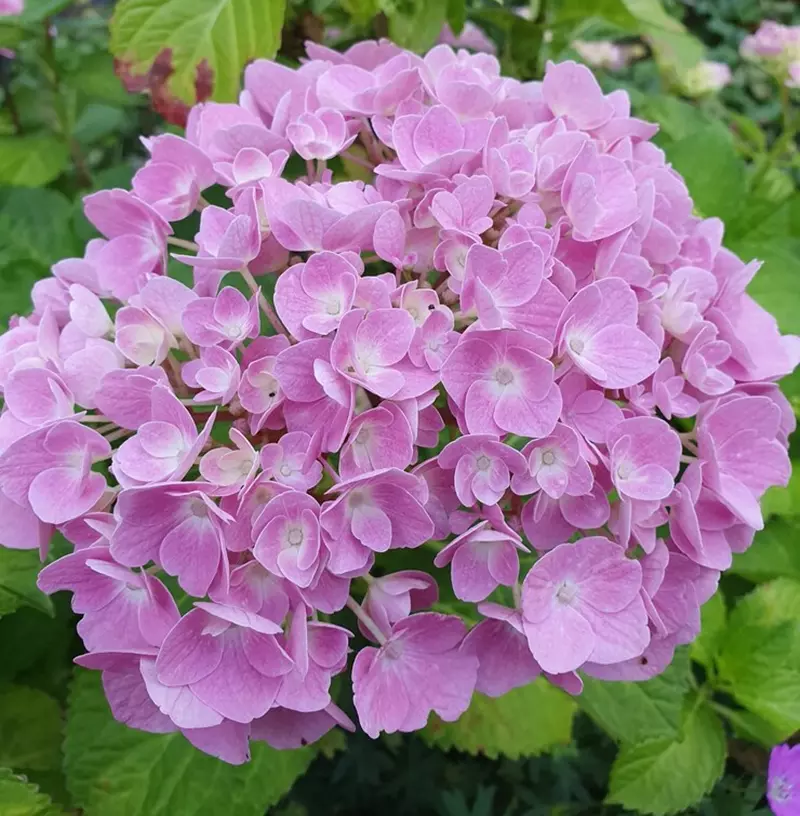
Companion planting involves strategically placing plants together to create a supportive environment. Benefits include:
When choosing companions for hydrangeas, consider plants that thrive in similar conditions. Hydrangeas prefer partial shade, rich soil, and consistent moisture.
Why: Ferns thrive in the same shady, moist conditions as hydrangeas. Their fine-textured foliage provides a beautiful contrast to hydrangea’s bold leaves and flowers.
Why: Hostas offer lush, broad leaves that complement the rounded shapes of hydrangea flowers. They thrive in shade and create a layered garden effect.
Why: These acid-loving plants share similar soil preferences with hydrangeas. Their early blooms provide seasonal interest before hydrangeas flower.
Examples: Astilbes, bleeding hearts, and columbines. These plants add pops of colour and delicate textures that harmonise with hydrangeas.
Examples: Pachysandra, creeping Jenny, and ajuga. Ground covers help retain soil moisture, reduce weeds, and protect hydrangea roots from heat.
Why: Grasses like carex or Japanese forest grass provide movement and texture, softening the look of hydrangea plantings.
To create a visually appealing and functional garden, consider these design tips:
Maintaining a healthy environment for both hydrangeas and their companions requires proper care:
Some plants are unsuitable companions for hydrangeas due to differing needs or growth habits. Avoid pairing hydrangeas with:
Companion planting with Hydrangea macrophylla enhances the beauty and health of your garden while creating a thriving ecosystem. By choosing plants with similar needs and complementary features, you can design a harmonious and low-maintenance garden. With thoughtful planning and care, your hydrangeas and their companions will provide a stunning display year after year.
Hydrangea macrophylla is a standout choice for garden design. With its large, showy blooms and lush foliage, this versatile shrub brings elegance and charm to any landscape. Whether used as a focal point, a backdrop, or part of a mixed border, hydrangeas can transform your garden into a stunning oasis.
Incorporating hydrangeas into your garden offers numerous benefits:
When designing with Hydrangea macrophylla, it’s important to select the right variety for your garden’s needs:
Appearance: Large, round flower heads in shades of blue, pink, or purple. Perfect for bold, eye-catching displays.
Best Use: Ideal for focal points or mass plantings in garden beds.
Appearance: Flat flower heads with a ring of larger florets surrounding smaller central blooms, offering a delicate, refined look.
Best Use: Great for mixed borders or as companion plants to other shade-loving perennials.
There are countless ways to incorporate hydrangeas into your garden design. Here are some creative ideas:
Use hydrangeas as standalone features to draw attention. Place them in strategic locations such as the centre of a garden bed, near entryways, or alongside pathways.
Combine hydrangeas with other shade-loving plants like ferns, hostas, or astilbes to create a lush, layered look.
Plant hydrangeas near the base of your home or along fences to soften hardscapes and add natural charm.
Grow hydrangeas in large pots to decorate patios, balconies, or small spaces. Ensure containers have adequate drainage and rich soil.
Use hydrangeas to create a monochromatic garden or a bold contrast. Adjust soil pH to achieve desired flower colours.
Proper planting and placement are crucial for the success of hydrangeas in your garden:
Pair hydrangeas with complementary plants to enhance garden aesthetics:
Maintaining hydrangeas throughout the year ensures their role in garden design remains impactful:
Hydrangea macrophylla is a versatile and stunning addition to any garden design. With thoughtful placement, companion planting, and proper care, these iconic shrubs can elevate the beauty of your landscape. Whether as focal points, part of mixed borders, or in themed gardens, hydrangeas offer endless opportunities to create a visually striking and harmonious outdoor space.
Hydrangea macrophylla, also known as bigleaf or garden hydrangea, is a deciduous shrub with large, colourful blooms that change colour based on soil pH.
Provide partial shade, moist well-drained soil, prune only in spring, and mulch around the base. Feed with balanced fertiliser during the growing season.
Spring and autumn are ideal planting times, but with proper hydration and care, it can be planted year-round in most climates.
Water 2–3 times per week or whenever the topsoil feels dry. Consistent moisture is key, especially during blooming or in hot weather.
It prefers morning sun and afternoon shade. Full sun can cause wilting and leaf scorch, especially in hot climates.
To turn flowers blue, lower the soil pH using aluminium sulfate. For pink, raise the pH using lime. Regular testing helps maintain colour control.
Only prune in early spring after the last frost. Avoid autumn pruning to protect flower buds that bloom on old wood.
Most varieties bloom on old wood, meaning they develop buds the previous year. Avoid heavy pruning or you’ll lose flowers for the next season.
You can propagate via softwood cuttings, layering, or division. Cuttings are easy and root well in a moist, shaded environment.
Apply thick mulch, delay pruning until spring, and consider using burlap wraps in areas with frost to protect flower buds and stems.
Common causes include improper pruning, frost-damaged buds, excess shade, or too much nitrogen fertiliser. Ensure proper light and prune carefully.
Yes, choose a large pot with drainage holes, use rich potting soil, and water regularly. Container plants may need more frequent feeding.
Common pests include aphids, spider mites, slugs, snails, and scale insects. Use natural remedies like neem oil or companion planting to deter them.
Diseases include powdery mildew, leaf spot, rust, and root rot. Ensure good air circulation, avoid overhead watering, and remove infected parts promptly.
Good companions include ferns, hostas, astilbes, azaleas, and shade-loving ground covers. These help retain moisture and enhance visual appeal.
Hydrangeas, including the exquisite Hydrangea macrophylla, continue to captivate gardeners with their vibrant blooms and versatility. While Hydrangea macrophylla often steals the show, other varieties, like the elegant oakleaf hydrangea, are also popular flowering shrubs that deserve attention in any garden setting. Their unique foliage and distinctive blooms make them a striking addition to landscapes.
When cultivating hydrangeas, understanding soil conditions is crucial. Although they thrive in various soils, those with sandy soils may need additional organic matter to retain moisture and nutrients. Maintaining proper soil quality not only enhances growth but also helps reduce the risk of common issues like leaf spot diseases, which can mar the beauty of their lush leaves.
Additionally, gardeners should remain vigilant against pests that might target their hydrangeas. In particular, the rose chafer and lined plant bug can pose challenges. Regular monitoring and early intervention are key to preserving the health and visual appeal of your plants.
Whether you’re growing the classic mophead varieties or experimenting with unique types like the oakleaf hydrangea, hydrangeas remain some of the most popular flowering shrubs in both traditional and contemporary gardens. With thoughtful care and attention, these stunning plants will reward you with season after season of unforgettable blooms.

Comprehensive guide on Hydrangea macrophylla 'Endless Summer'. Learn expert tips on planting, care, pruning, and maintaining vibrant blooms.
Read More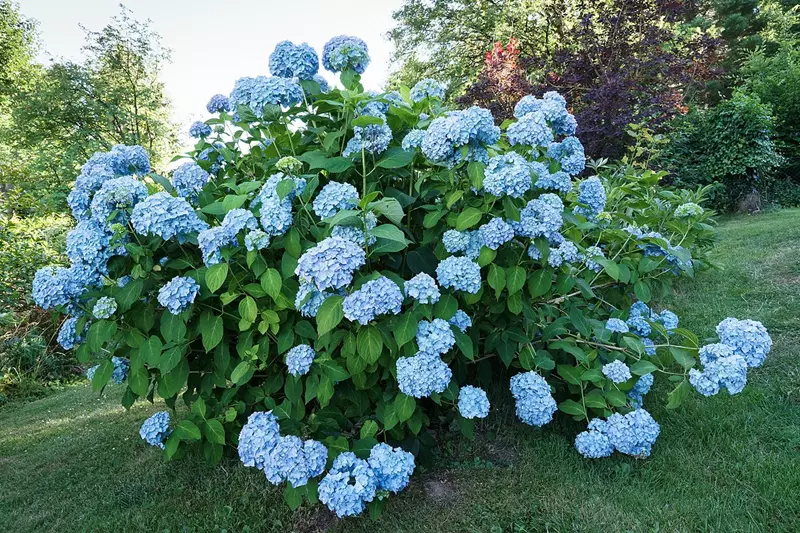
Discover the beauty and care techniques for Hydrangea macrophylla 'Nikko Blue'. Learn how to grow, maintain, and enjoy this stunning blue-flowering hydrangea.
Read More
Discover a comprehensive guide to Hydrangea macrophylla 'Twist and Shout'. Learn about planting, care, pruning, and companion plants for vibrant blooms.
Read More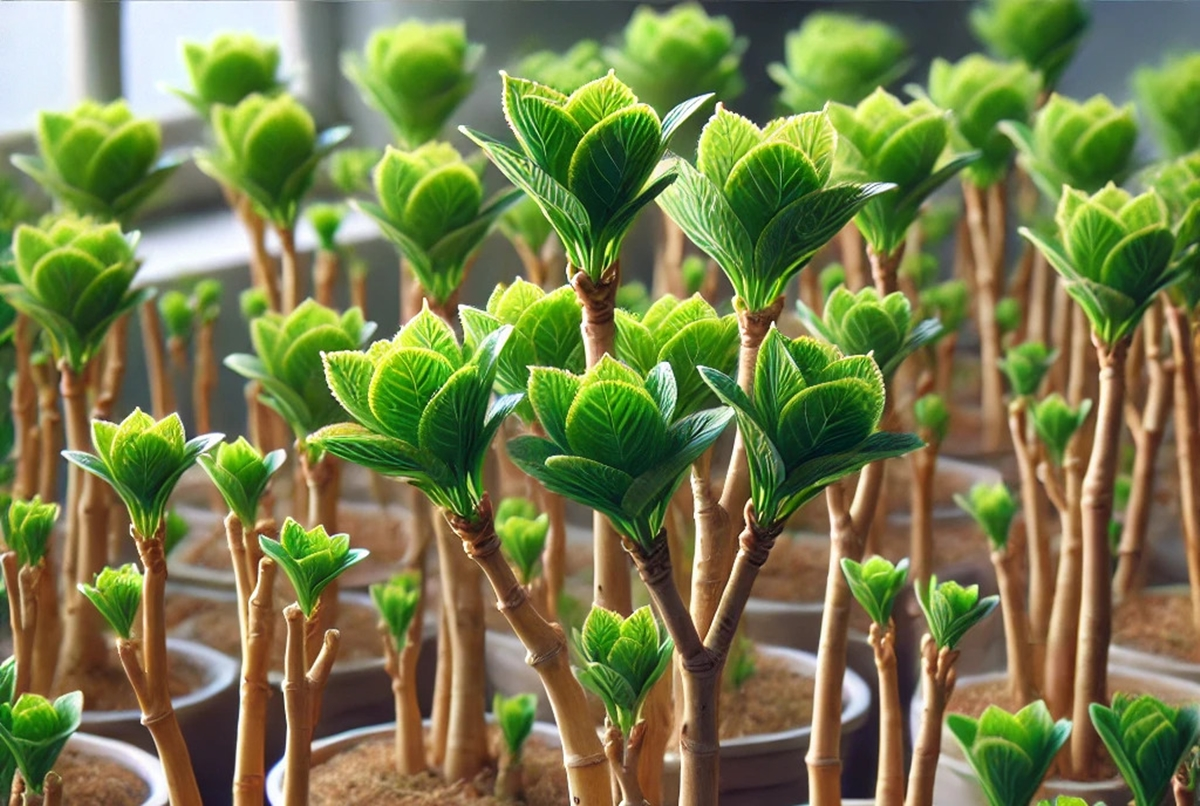
Learn how to propagate Hydrangea macrophylla with our quick guide. Discover step-by-step methods for softwood, semi-ripe, and hardwood cuttings to grow healthy plants.
Read More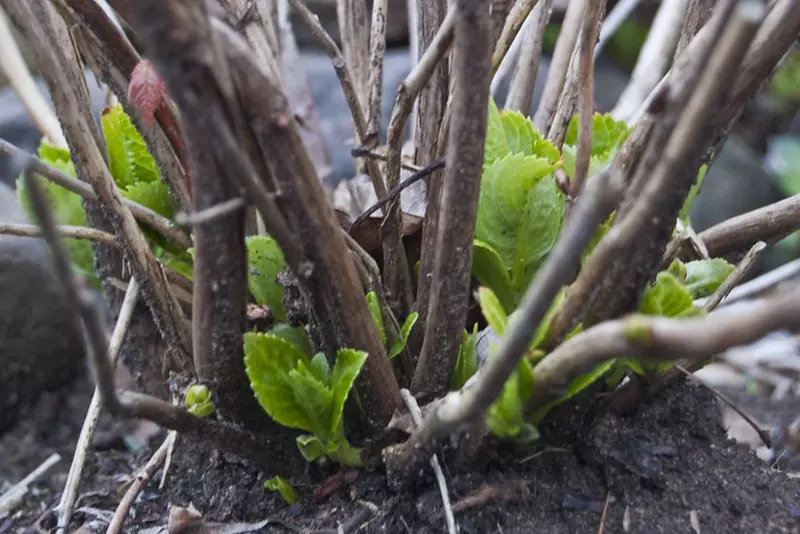
Learn when and how to prune your hydrangeas this spring with our detailed guide. Includes tips for tool preparation and proper pruning techniques.
Read More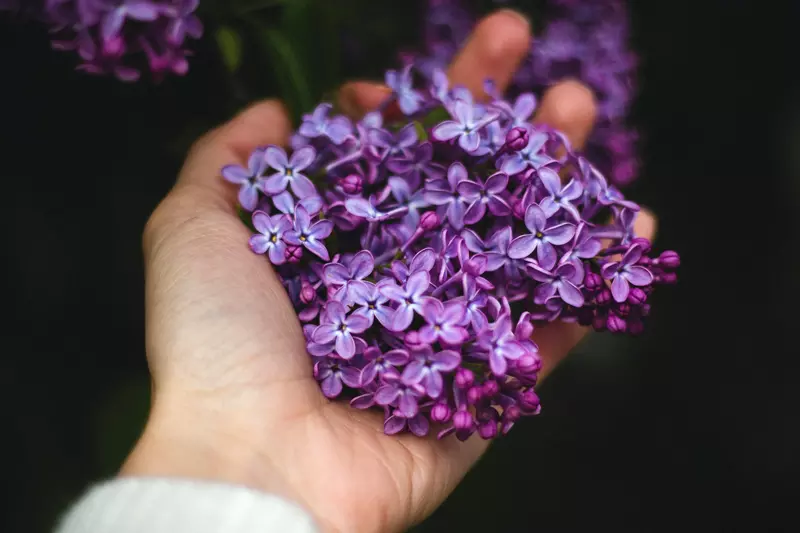
Discover how to transplant a hydrangea with our step-by-step guide. Learn the best time to move your hydrangea, key techniques, and essential aftercare tips to ensure your plant thrives.
Read More